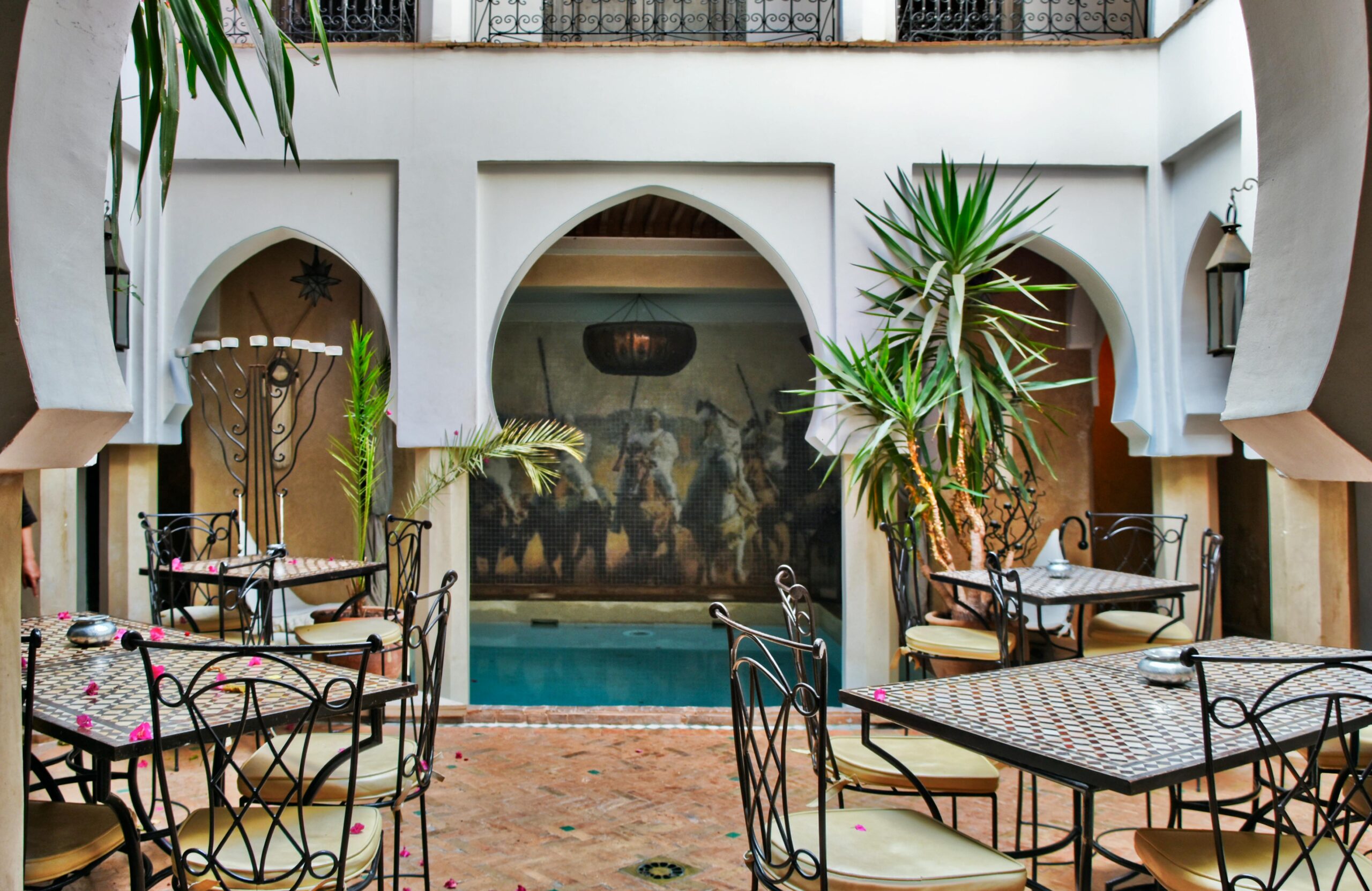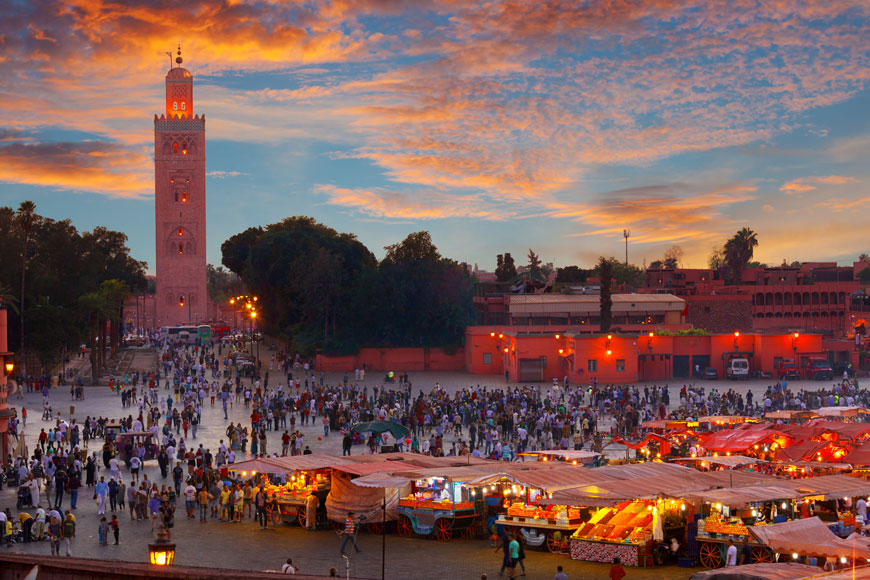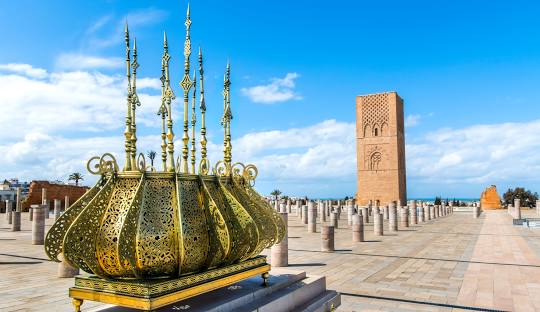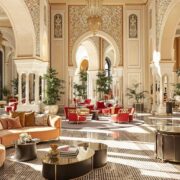
Moroccan Riads: A Glimpse into Traditional Architecture and Tranquil Luxury
Morocco, with its rich cultural history and diverse landscapes, offers some of the most unique and captivating architecture in the world. Among the country’s architectural gems, the Riad stands out as a symbol of Moroccan heritage, offering a serene escape from the vibrant hustle and bustle of city life. Known for their stunning courtyards, intricate designs, and soothing atmospheres, Moroccan Riads are architectural masterpieces that embody the essence of traditional Moroccan living. At MoroccoWow, we invite you to explore the beauty and significance of Riads and discover why they are the heart and soul of Moroccan architecture.
1. What is a Riad?
A Riad is a traditional Moroccan house or palace built around an interior garden or courtyard. The word “Riad” comes from the Arabic word “Rawda,” meaning garden or paradise. These homes are typically found in cities like Marrakech, Fes, and Meknes, where they provide a peaceful haven amidst the vibrant streets. The design of a Riad is centered around the concept of privacy and tranquility, with an emphasis on creating a harmonious space where nature, water, and light are incorporated into the living environment.
The interior of a Riad is usually a multi-level structure, with rooms arranged around a central courtyard. The architecture is characterized by a blend of practicality and aesthetic beauty, offering a perfect balance of functionality, comfort, and elegance.
2. The Layout: An Oasis of Calm
The layout of a Riad is one of its most striking features. Upon entering a Riad, guests are immediately greeted by a sense of peace and seclusion. The central courtyard is often lush with greenery, flowers, and sometimes even a small fountain or pool, creating an oasis in the heart of the home. The courtyard is designed to bring nature into the house, with natural light flooding the space and the sound of flowing water creating a calming atmosphere.
Surrounding the courtyard, you’ll find rooms such as the salon, bedrooms, and dining areas. These rooms are typically accessed via arched doorways or decorative wooden doors that lead into the tranquil heart of the home. The design encourages a flow of natural ventilation, allowing the house to remain cool even in the hottest months.
3. The Use of Courtyards and Gardens
One of the most essential elements of a Riad is its interior garden or courtyard. These gardens provide a private outdoor space that serves as a focal point for the home. The inclusion of lush greenery, fruit trees, and fragrant flowers in the courtyard creates a peaceful retreat, away from the busy streets outside.
The courtyard often features a central water feature such as a fountain or pool, which not only adds beauty but also helps to cool the air. The sound of water in the courtyard contributes to the tranquil environment, making it an ideal space for relaxation, conversation, and meditation.
In some Riads, the rooftop terrace is also an important feature, offering sweeping views of the city or surrounding landscape. These terraces are perfect for enjoying a cup of Moroccan mint tea, soaking up the sun, or watching the sunset over the city.
4. Architectural Details: Intricate Beauty and Craftsmanship
The craftsmanship and intricate details in the architecture of Riads are what truly set them apart. From the elaborate mosaics and tile work (known as zellige) to the intricate woodwork and stucco carvings, every corner of a Riad tells a story of Moroccan artistry and tradition.
Zellige Tilework: One of the most prominent features of Riad architecture is the use of zellige—hand-cut, glazed ceramic tiles arranged in intricate patterns that adorn the floors, walls, and fountains. The designs are often geometric and can be found in a variety of vibrant colors, creating a striking contrast with the neutral tones of the walls and ceilings.
Stucco Carvings: Another hallmark of Riad architecture is the use of tadelakt, a smooth, polished plaster that is applied to the walls, creating an elegant and reflective surface. Often, these walls are decorated with delicate stucco carvings, depicting floral patterns, arabesques, or intricate geometric designs that are characteristic of Moroccan art.
Wooden Doors and Windows: The doors and windows in Riads are often made from wood and feature ornate carvings or latticework, known as mashrabiya. These wooden elements allow for privacy while still allowing light and air to flow through the space.
Arches and Columns: Arches are a prominent feature in Riad design, adding a sense of elegance and symmetry to the space. Many Riads also include columns, often in the entryway or around the courtyard, which serve as both decorative and structural elements.
5. Functionality Meets Aesthetics
The design of a Riad is not just about beauty—it also prioritizes functionality. The structure is well-adapted to the Moroccan climate. With its inward-facing design, the Riad offers privacy and protection from the dust and noise of the city. The thick walls, small windows, and central courtyards help to regulate temperature, keeping the interior cool in the summer and warm in the winter.
The focus on natural ventilation is another key element of Riad architecture. The layout encourages air circulation, and many Riads feature high ceilings and open spaces that allow the breeze to flow through the home, reducing the need for artificial cooling or heating.
6. Riads as Hotels: A Unique Travel Experience
In recent years, many traditional Riads have been converted into boutique hotels, offering visitors the chance to experience authentic Moroccan hospitality in an intimate, luxurious setting. Staying in a Riad allows travelers to step back in time and immerse themselves in the beauty and tranquility of Moroccan architecture. The peaceful courtyard, stunning decor, and personal touches make staying in a Riad a unique and unforgettable experience.
Many Riads also offer services such as private tours, cooking classes, or traditional Moroccan meals, allowing guests to experience the culture in a deeper and more meaningful way.
7. The Legacy of Moroccan Architecture
The Riad is more than just a home—it’s a reflection of Morocco’s rich cultural and architectural heritage. Rooted in Islamic, Berber, and Andalusian influences, the Riad represents centuries of craftsmanship, artistry, and design. Today, these buildings continue to serve as both functional homes and elegant symbols of Moroccan culture.
For visitors to Morocco, the Riad offers a tangible connection to the country’s past and a place where traditional architecture meets modern comfort. Whether you are wandering through the narrow streets of Fes or enjoying the luxury of a Marrakech Riad, the experience is one that will stay with you long after your journey ends.
Conclusion
Moroccan Riads are a stunning example of how architecture can blend beauty with functionality, creating spaces that are both peaceful and inspiring. Their intricate design, use of natural materials, and focus on privacy make them unique examples of Moroccan craftsmanship and hospitality. Staying in a Riad is a way to immerse yourself in the heart of Moroccan culture, experiencing the luxury and serenity of a space that has been cherished for generations.
At MoroccoWow, we invite you to discover the magic of Moroccan Riads, whether you’re exploring the rich history of Morocco or seeking a quiet oasis of relaxation during your travels.
Recent Posts
Empowering Adventures: A Solo Female Travel Guide to Morocco in 2025
Affordable Ways to Fly to Marrakech from Manchester: Your Ultimate Guide
Experience Luxury at the Hotel Sofitel Lounge and Spa Marrakech: A Gateway to Relaxation and Elegance

Marrakech

Chefchaouen




